Hydroponics is a subset of hydroculture that includes utilizing mineral fertilizer solutions in a water solvent to grow plants, mainly crops, without soil. Plants on land or in water can grow with their roots exposed to the nutrient liquid or with an inert media such as perlite, gravel, or other substrates supporting them physically. Despite inert medium, roots may alter rhizosphere pH, and root exudates can impact rhizosphere biology and the physiological equilibrium of the nutrient solution through secondary metabolites.
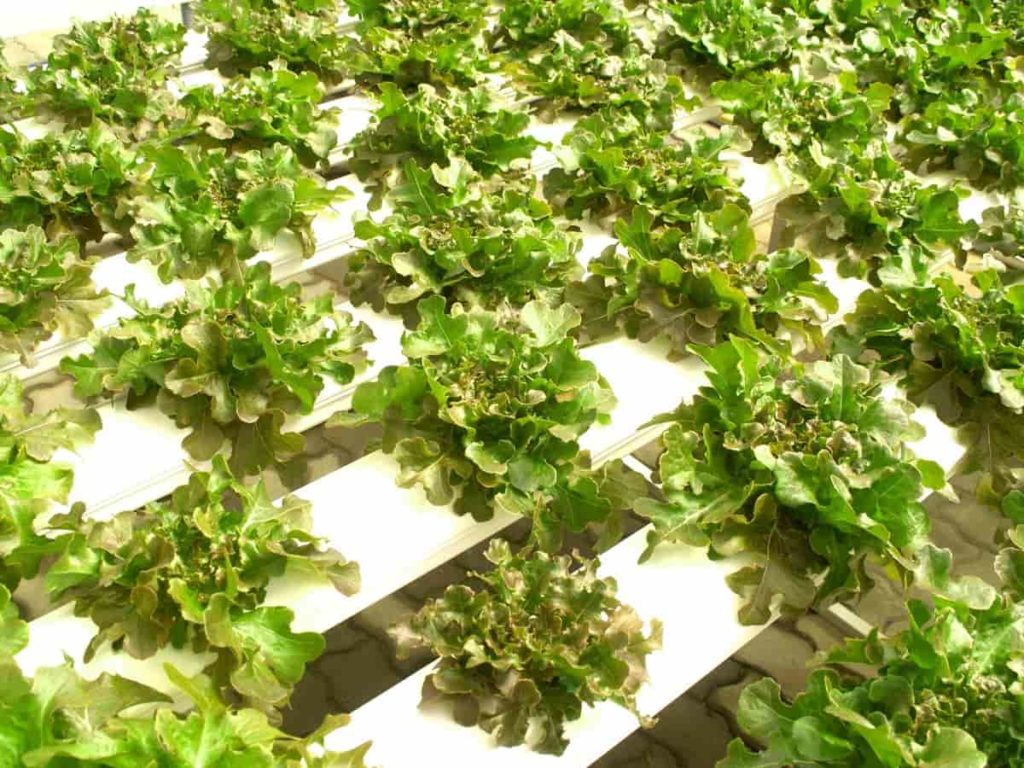
Hydroponics is a method of growing crops without using soil, instead of using a different medium to support the plant’s roots and growing them directly in nutrient-rich water. Let’s check out a way of earning up to 3 crores per year from soilless farming below.
What are the benefits of hydroponic farming?
Saving the space
Plants cultivated in the soil must stretch their roots to obtain water and all of the nutrients they require to thrive. This necessitates that they are planted at a specified distance apart. Roots do not need to spread in hydroponic systems since nutrients and water are provided directly to them. Consequently, compared to soil-based systems, hydroponic systems can produce more crops in the same amount of area.
Conservation of water
Because so much water is wasted in field farming, it consumes a lot. Much of the water evaporates, drains, and accumulates, rendering it useless. Because water is distributed in a regulated manner, hydroponic systems use around ten times less water. Furthermore, some systems recycle water, resulting in even lower use.
Results in higher yield
Creating optimum circumstances ensures that plants acquire adequate nutrition sent directly to the roots. In addition, microclimates can ensure Ear-round growth and short crop rotations. All of this combines to provide significantly larger yields than traditional agricultural methods. It has been discovered that hydroponic greenhouses can generate 240 times the productivity of conventional agricultural practices.
Less labour required
Hydroponics relieves laborers of the burden of tilling, weeding, herbicide and pesticide application, and other labor-intensive tasks managed with significantly fewer man-hours. This can decrease the labor cost. A tiny hydroponic greenhouse may be run entirely by an individual employee.
In case you miss this: How to Get Hydroponic Farming Subsidy: Up to 50%, and License to Start
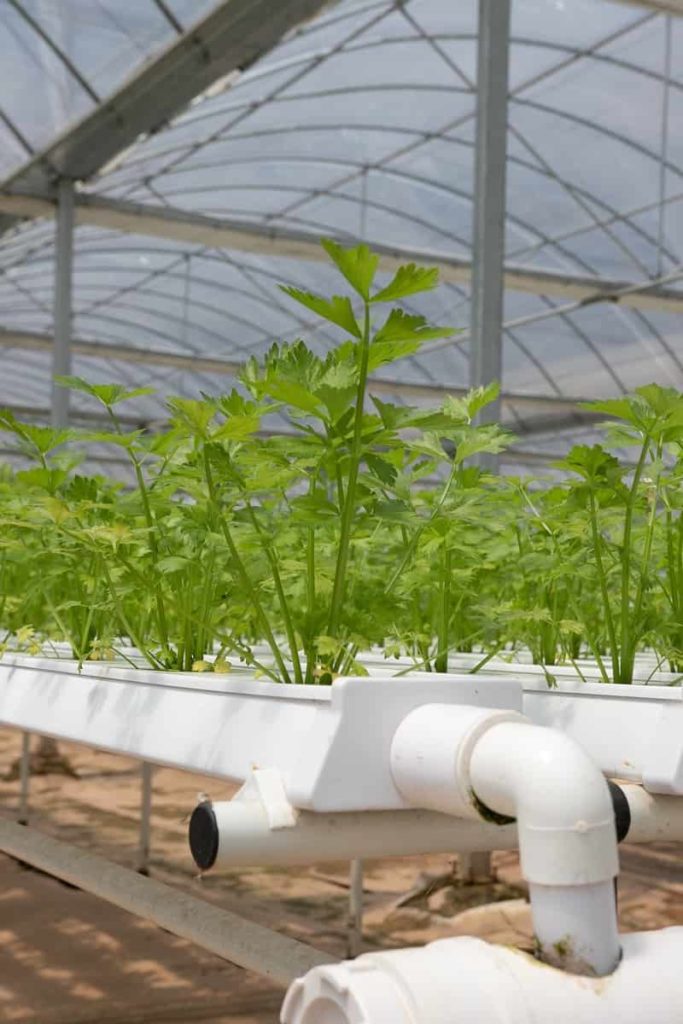
No chemicals
While hydroponic systems can not eliminate insect problems, they reduce the likelihood of them occurring, reducing the need for pesticides and fertilizers. Herbicides aren’t required as a consequence. Furthermore, since hydroponic systems are frequently used inside, pests have a harder time infiltrating them. Therefore pesticides aren’t needed.
Quick growth rate
Using conventional techniques, most fruits and vegetables take many months to mature. Obtaining nutrients from the soil is a time-consuming process. The nutrients they ingest are frequently lost throughout the maturation process.
A hydroponic plant’s growth rate is 30-60 times quicker than a soil-grown plant’s. This is because in hydroponics, plants are provided with abundant nutrition. The farmer can control all components of the growth process like nutrition, heat, pests, and humidity. As a result, the entire cycle may be simplified to produce larger, quicker plants with better yields.
No soil needed
Loss of soil structure, erosion, compaction, nutrient degradation, and salinity are all contributing factors to the destruction of topsoil worldwide. Furthermore, soil quality varies significantly from one place to the next, and many crops have strong preferences for specific soil types. This implies that traditional farmers may only plant crops appropriate to their local soil. As a result, few crops can be cultivated using conventional methods in broad portions of the world.
Earning up to 3 crores per year from soilless farming
The success story of Mr. Harishchandra Reddy
Mr. Harishchandra Reddy is a successful hydroponic farmer in Hyderabad, Telangana. He wanted to provide consumers with high-quality vegetables at an affordable cost.
In case you miss this: Common Mistakes Made in Hydroponic Farming: Things to Avoid for Beginners
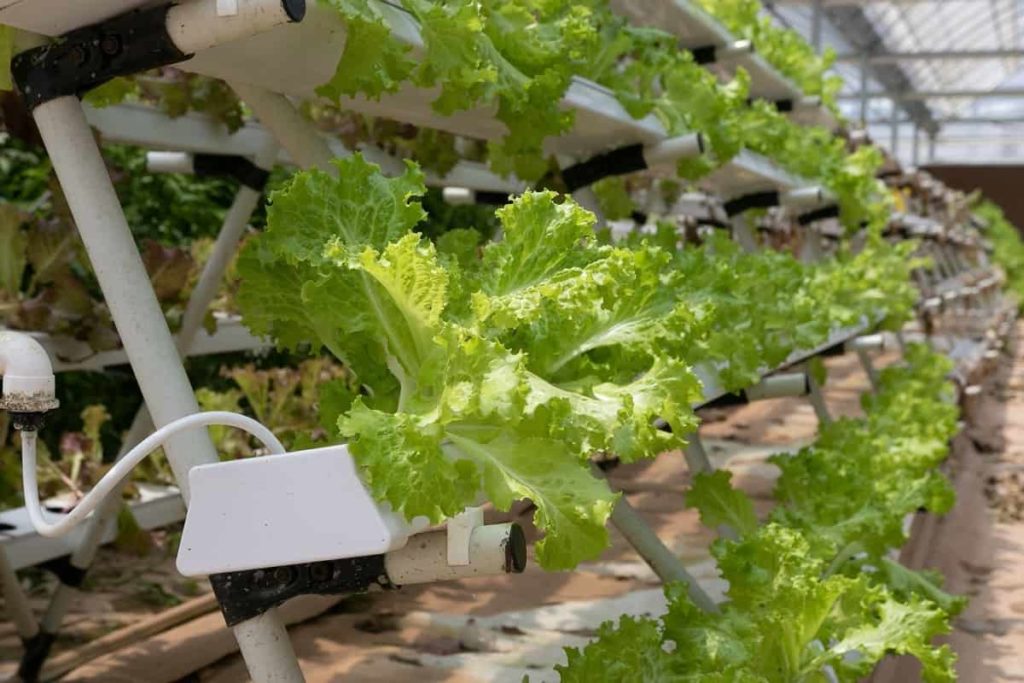
While he was studying in his college, he learned about various technologies to enhance agriculture, and on an agricultural tour, he and his classmates were taken to a hydropic farm where they explained the different techniques used to grow vegetables. ince then, he always wanted to start a hydroponic farm of his own. Soon after he completed his education, he worked for a year, and after that, he quit. Even though he was happy with his job, he wanted to grow vegetables by hydroponic farming and wanted his own business.
So he deeply gained knowledge about hydroponics and other advanced farming techniques for 6 months while gathering the capital required to start the farm. He knew that the initial investment would be high, so he took time to collect the money he needed from various sources. After this, he immediately started constructing his hydroponics farm and started earning high profits. So let us get into the details of Mr. Harishchandra Reddy’s farm.
Construction of polyhouse according to Mr. Harishchandra
For growing vegetables in a hydroponic system in a large area, one must construct a poly house. nlike traditional farming, which involves growing crops on the land where we can’t control the climatic situations, poly house helps you grow vegetables in a controlled environment. He also installed three large fans on the walls of the polyhouse to drain out the excess heat in the summers. he size of the polyhouse should be dependent on the yield of vegetables you want to cultivate.
Don’t limit yourselves to the size of the polyhouse and its cost, says Mr. Harishchandra. Even though initial investment can be high, once you get back your one-time investment cost from the income generated, you’ll have higher profits in the long run. Keep in mind that when it comes to these advanced methods of cultivating vegetables, the quality of materials in which you want to grow them should be good. This may cost a little bit more than the normal agricultural practice. But as the years pass, you can see huge profits coming your way by producing quality crops.
Crop selection according to Mr. Harishchandra
Mr. Harishchandra only cultivates green leafy vegetables on his hydroponic farm and says by hydroponic techniques, you can harvest these crops after a month. This is a very short period. Usually, when all the environmental conditions are met with a constant supply of nutrients, any plant takes less time to grow. Especially green leafy vegetables take significantly less time to grow in these conditions.
Also, there is a high demand for quality green leafy vegetables in the market. Keeping these parameters in mind, Mr. Harishchandra decided to grow green leafy vegetables on his hydroponic farm.
Different methods of hydroponic cultivation used in Mr. Harishchandra’s farm
Cultivating by linear NFT (Nutrient film techniques) channels
This is the essential and most basic method used to cultivate vegetables in hydroponics. his system involves cultivating vegetables in long rectangular channels where the water is allowed to pass. The water circulated in these channels should be high in nutrients. As we now know, we use only water as a culture medium in hydroponics, so the nutrient quality and quantity in the water we are using should be high, as Mr. Harishchandra expressed. These long rectangular channels have holes in the middle with equal gaps between them.
In case you miss this: Top Hydroponics Companies in India
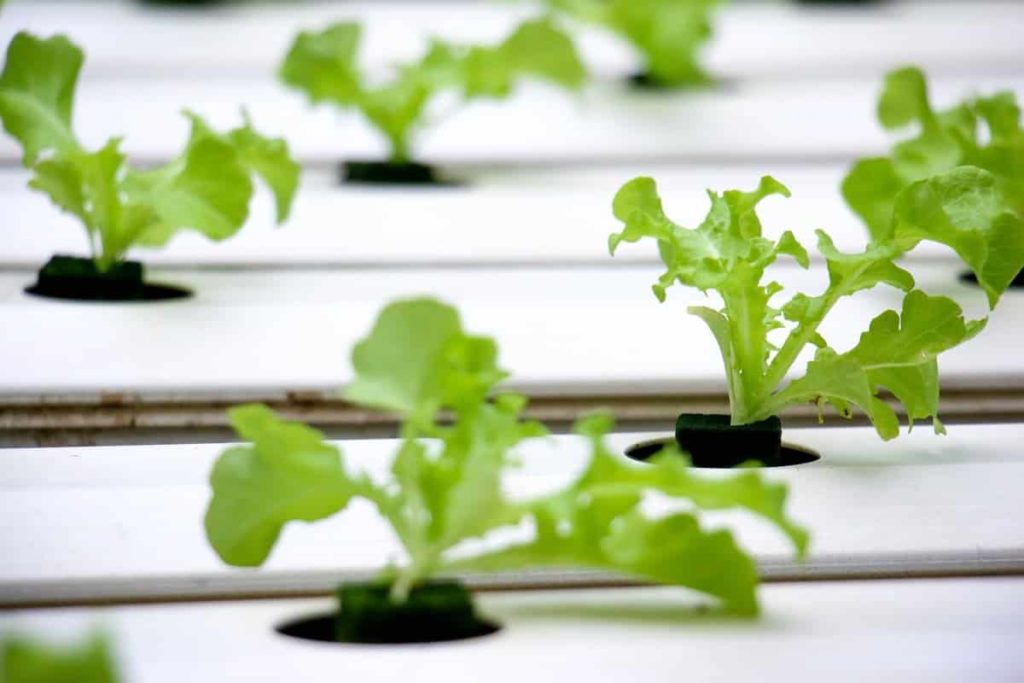
Each pipe has 20 holes in it. In these holes, netpods of 2-inch size are kept. Netpods are small pots with many holes in them. Water can easily pass through these holes while flowing in rectangular channels via pipes. These netpods hold the roots of a plant while keeping them in contact with the water to a sufficient depth. While the water flows through the long channels, it is always in contact with the plant’s roots, which helps plants absorb nutrients from the water.
While you are starting to cultivate a seedling, clay balls should be used in netpods to support the seedlings. As we don’t use soil in hydroponics, lightweight clay balls should be used for providing support until they reach a particular growth period. Clay balls are made by heating clay balls at 1300 degrees centigrade, and these become light and stiff when they undergo this process. r. Harishchandra decided to grow red spinach in the NFT system. When you observe the plant growth, the roots have less growth than the shoots.
This is because we provide the plant with adequate oxygen, carbon dioxide, and other required nutrients to the roots in a stress-free environment, which aids in the plant’s rapid growth and less root growth. Therefore, whenever all the nutrients required for this plant are provided, there will be less growth of roots. Therefore, you should provide the nutrients in the amount the plant needs, and it should not be excess than that. Also, by hydroponics, we can minimize the water quantity by reusing the same water by adding sufficient nutrients.
The diseases are significantly less in this system since we use only water. However, when soil is the growth medium, many microbes can affect the plant, hurting yield or resulting in high maintenance and care. For control, we use pesticides and insecticides on plants, affecting their quality when plants are grown in soil. But there is no such problem in this system since the growth medium is water. Also, monitoring is very but should be strict.
His hydroponic farm consists of several units of linear NFT systems. Each unit has three subunits consisting of 16 linear pipes or channels. In each pipe, you can fit 20 plants in netpods, says Mr. Harishchandra. The stands used in this system are rust-free.
Deepwater culture system (DWC)
We use a large tub instead of pipes in the deep water culture system. This large tub has holes in it where we can place methods and grow crops. This system in hydroponics is used for plants that grow deep roots. Regular monitoring is a must in deep water systems. You can check the plant’s health by observing its roots of it. If the roots are white, then the plant is healthy. However, if they are slightly turning black or brown, you might make some mistakes while cultivating the plants in a hydroponics deep water culture system.
In case you miss this: Growing Herbs Hydroponically – Farming Practices
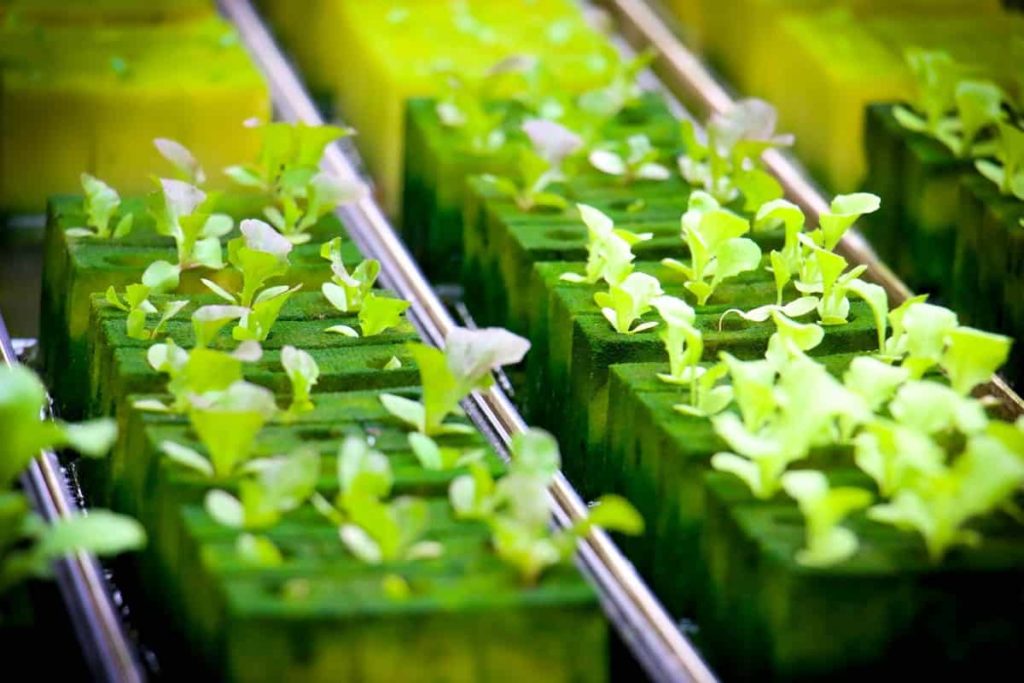
If white, then the dissolved oxygen and nutrients are sufficient for the plant. However, if the roots turn black or brown, there might be a problem with the pH in your water, says Mr. Harishchandra. If the roots turn brown or black, then you can cure them by setting the correct pH value for your water or by checking the TDS (Total dissolved solids) present in the water you provide. He cultivates green spinach in the deep water culture system on his farm. He says the deep water culture system is better suitable for cultivating normal spinach since it has long roots growing from the stems.
Vertical NFT hydroponic farming
This method of hydroponics farming is used by people who have less space. This involves placing water pipes or channels above the other at a proper distance and spacing. For example, on his hydroponic farm, Mr. Harishchandra cultivates mint by vertical farming. He put them by pipes one above the other in the shape of a pyramid to get abundant sunlight for even crops. If you directly place the channels above the other, the crop would suffocate and die due to insufficient sunlight, says Mr. Harishchandra.
He said the mint crop is best for cultivating through vertical hydroponic farming. This is because at the time of harvesting, you will only need to cut the stems, and the plant grows back to normal in another month. or growing demand, this is one of the best and most efficient methods for cultivating the crops, he expressed. However, you have to take care that the shadow of one pipe doesn’t fall on the other. By designing it in a pyramid shape, this can be avoided. Each unit has 320 crops.
Everything is similar to a regular NFT system, and the only difference is the shape of the unit is designed. Diseases in the hydroponic culture of plants are very few. As these plants are cultivated in a protected environment and the growth medium used is water, most serious diseases can be prevented. However, as there is a use of water, sometimes, if the water management is not regulated correctly, crops can get attacked by fungus. In this case, pruning of crops should be done to stop the disease from spreading.
Proper temperature and humidity maintenance are done to cultivate healthy plants. However, these plants can also get attacked by aphids, thrips, and other insects. To prevent this, Mr. Harishchandra follows IPM (Integrated pest management) practices, like sticking yellow and blue stickers to prevent aphids and thrips. Also, he released some eco-friendly insects, like ladybirds.
These insects eat the harmful insects and their eggs under the leaves of the plants. Daily a ladybug can eat nearly 300 eggs. In this way, we can control pests eco-friendly without using pesticides and insecticides. He concludes that everything is grown on the farm. Mr. Harishchandra is organic and healthy.
In case you miss this: Hydroponic Onion Farming – Growing Guide
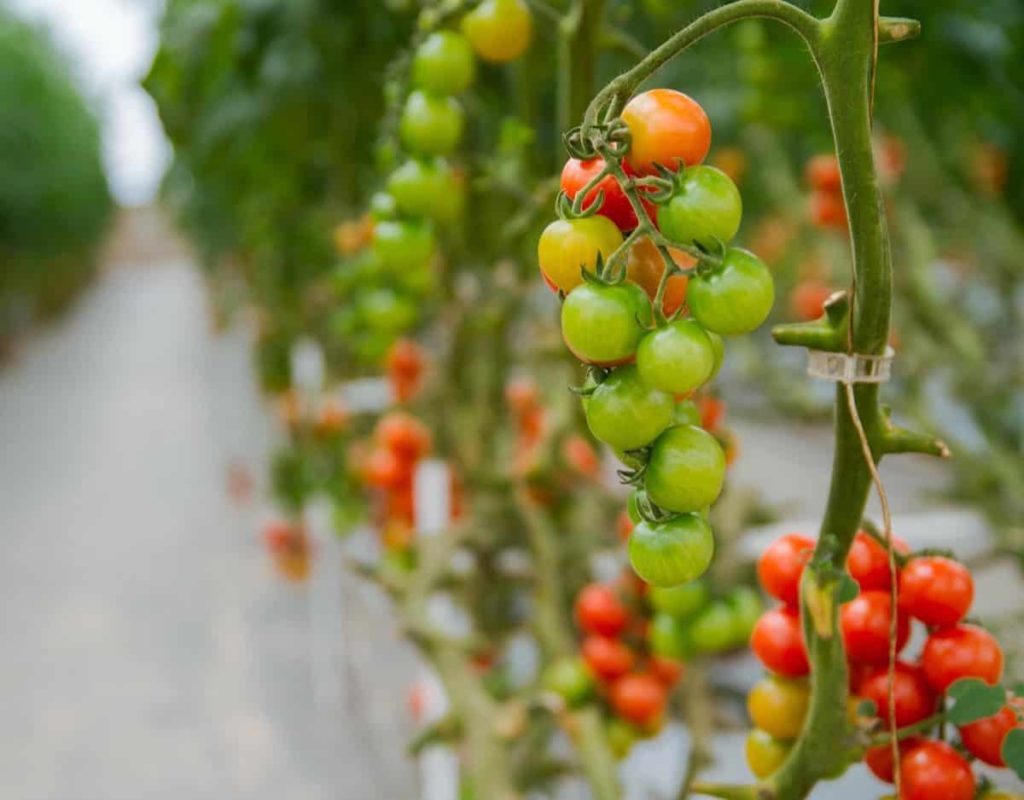
Marketing and profit analysis of Mr. Harishchandra’s farm
Each plant, when fully grown, can be a bunch and weigh up to 150 to 200 grams. He cultivates nearly 1,20,000 bunches of leafy vegetables per month on his farm. That means per year, he cultivates about 14,40,000 bunches of leafy vegetables. Even if you assume the lowest price in the market as 20 rupees per bunch, Mr. Harishchandra is earning rupees 2.88 crores as a profit from cultivating green leafy vegetables by hydroponic farming.
Although this profit is huge, he nearly spent 1.9 crores in the first year as an investment, including one-time investments. The cost of this investment is a one-time investment cost. And if you take proper care, you can get back your investment in just one year, and also you can see huge profits in the following years, says Mr. Harishchandra. In this way, Mr. Harishchandra is now a proud owner of his hydroponic farm, earning crores per year. He also suggests farmers try this type of advanced farming technique to gain huge profits in a short time.
- Economical Aquaculture: A Guide to Low-Budget Fish Farming
- 15 Common Planting Errors That Can Doom Your Fruit Trees
- How to Make Houseplants Bushy: Effective Tips and Ideas
- Innovative Strategies for Boosting Coconut Pollination and Yield
- Pollination Strategies for Maximum Pumpkin Yield
- The Complete Guide to Chicken Fattening: Strategies for Maximum Growth
- Natural Solutions for Tulip Problems: 100% Effective Remedies for Leaf and Bulb-Related Issues
- Revolutionizing Citrus Preservation: Towards a Healthier, Greener Future
- Natural Solutions for Peony Leaf and Flower Problems: 100% Effective Remedies
- Maximizing Profits with Avocado Contract Farming in India: A Comprehensive Guide
- Natural Solutions for Hydrangea Problems: 100% Effective Remedies for Leaf and Flowers
- The Ultimate Guide to Choosing the Perfect Foliage Friend: Bringing Life Indoors
- From Sunlight to Sustainability: 15 Ways to Use Solar Technology in Agriculture
- The Ultimate Guide to Dong Tao Chicken: Exploring from History to Raising
- The Eco-Friendly Makeover: How to Convert Your Unused Swimming Pool into a Fish Pond
- Mastering the Art of Delaware Chicken Farming: Essentials for Healthy Backyard Flocks
- 20 Best Homemade Fertilizers for Money Plant: DIY Recipes and Application Methods
- How to Craft a Comprehensive Free-Range Chicken Farming Business Plan
- Brighten Your Flock: Raising Easter Egger Chickens for Beauty and Bounty
- How to Optimize Your Poultry Egg Farm Business Plan with These Strategies
- Subsidy for Spirulina Cultivation: How Indian Government Schemes Encouraging Spirulina Farmers
- Ultimate Guide to Raising Dominique Chickens: Breeding, Feeding, Egg-Production, and Care
- Mastering the Art of Raising Jersey Giant Chickens: Care, Feeding, and More
- Ultimate Guide to Raising Legbar Chickens: Breeding, Farming Practices, Diet, Egg-Production
- How to Raise Welsummer Chickens: A Comprehensive Guide for Beginners
- How to Protect Indoor Plants in Winter: A Comprehensive Guide
- Ultimate Guide to Grow Bag Gardening: Tips, Tricks, and Planting Ideas for Urban Gardeners
- Guide to Lotus Cultivation: How to Propagate, Plant, Grow, Care, Cost, and Profit
- Agriculture Drone Subsidy Scheme: Government Kisan Subsidy, License, and How to Apply Online
- Ultimate Guide to Raising Araucana Chickens: Breed Profile, Farming Economics, Diet, and Care
- Bringing Hydroponics to Classroom: Importance, Benefits of Learning for School Students
- Ultimate Guide to Raising Polish Chickens: Breed Profile, Farming Economics, Diet, and Care
- Ultimate Guide to Raising Australorp Chickens: Profile, Farming Economics, Egg Production, Diet, and Care
- Silkie Chicken Farming: Raising Practices, Varieties, Egg Production, Diet, and Care
- Sussex Chicken Farming: Raising Practices, Varieties, Egg Production, Diet and Care
- Homemade Feed Formulations for Livestock: Discover Cost-effective Starter to Finisher Feed Recipes
Great information about agriculture through advanced techniques.
This is an excellent información, especially for us who are entering this practice.
We have a chamber of size 25’x10’x15’ having facilities of AC,Heater,ozone generator ,lighting etc.We also have water circulation system and hydroponic system. We would like to grow leafy vegetables and sell in the market.If you do it we can grow and supply as per your requirements.
If we succeed we can go for poly house under your guidance.
Regards-Rajda
what is the area in which he has been cultivating using hydroponics?
I am interested in Hydroponic Agriculture
Am working in hydroponic farming since 6 years in Kuwait am interested to do job if it is available here in India.
I would like to take training, full guidance, like Bank loan facility for Hyaluronic Farming. Please give your valuable advice
I am interested hydroponic farming